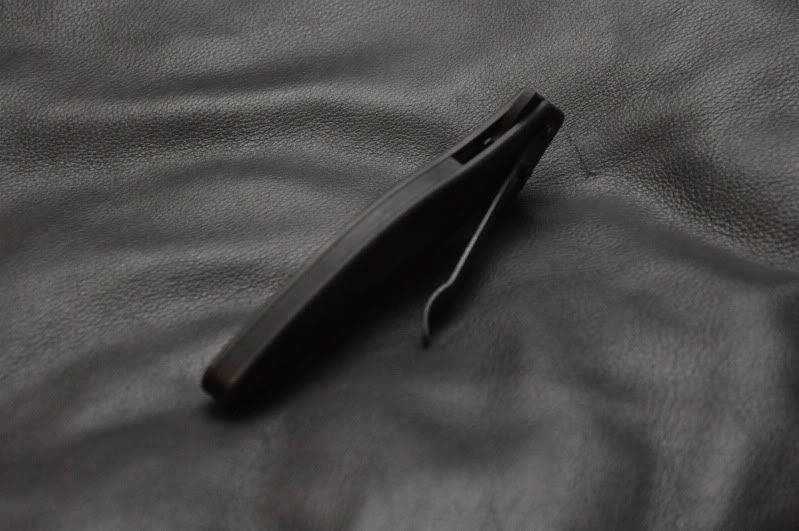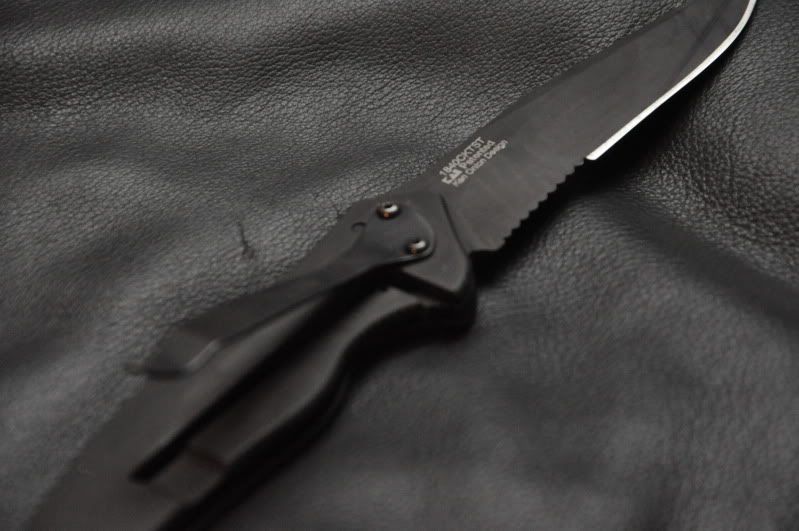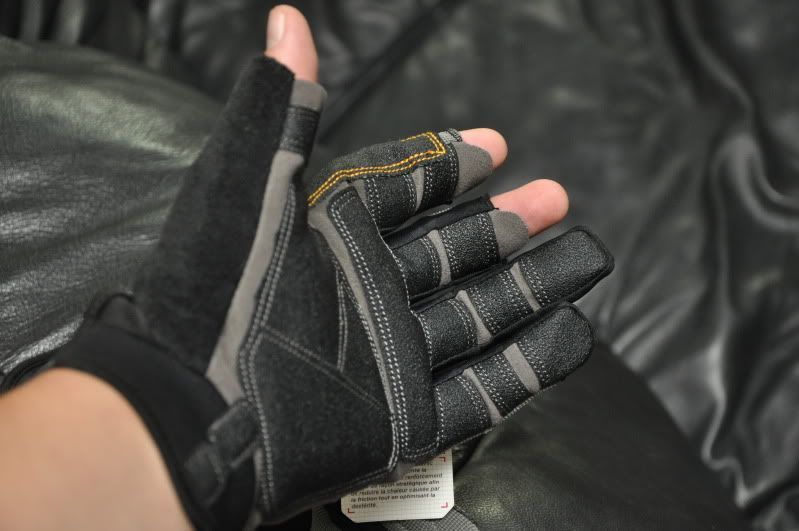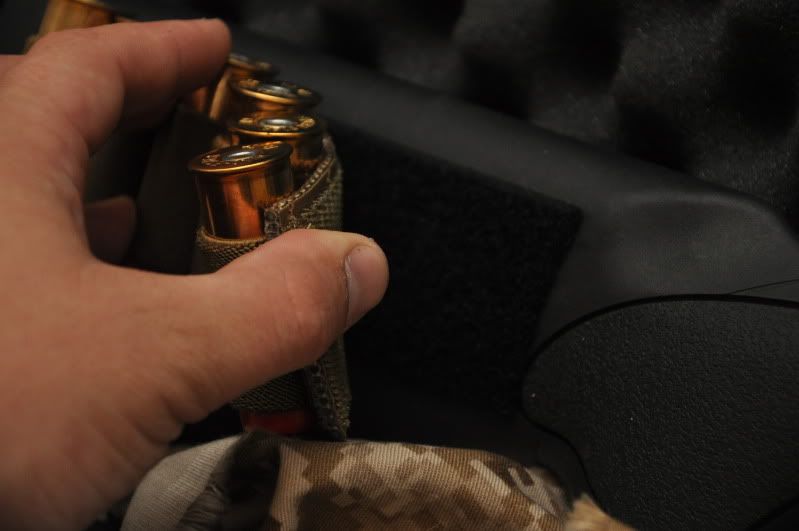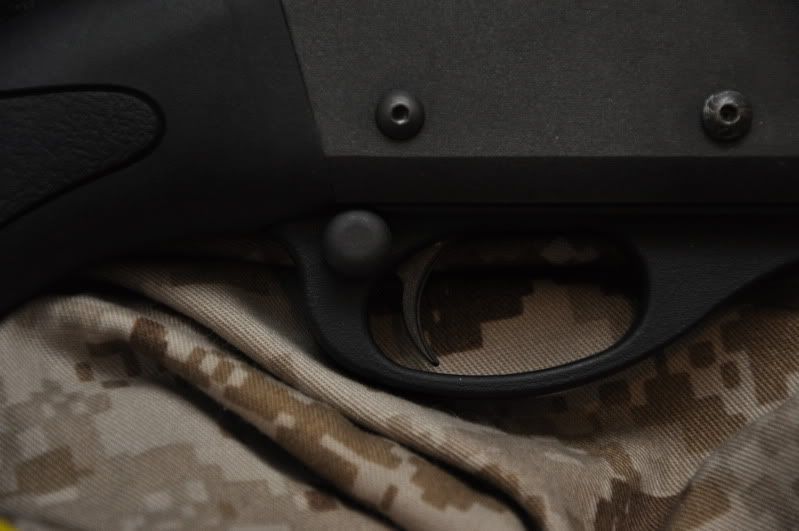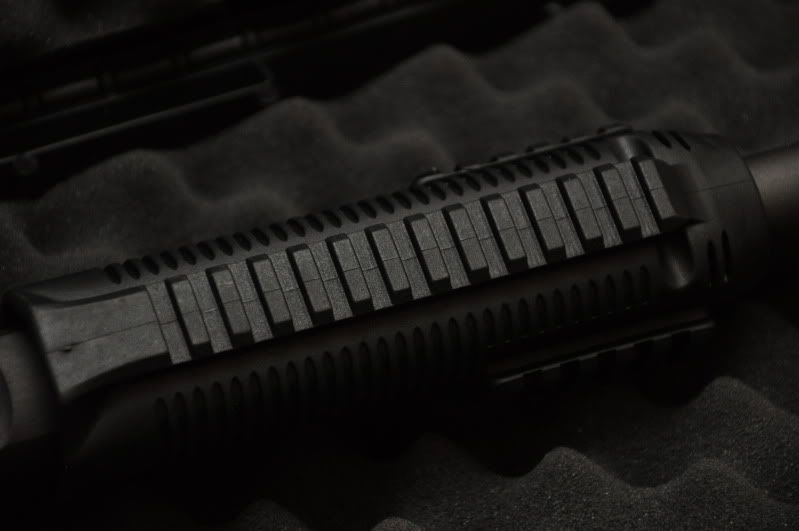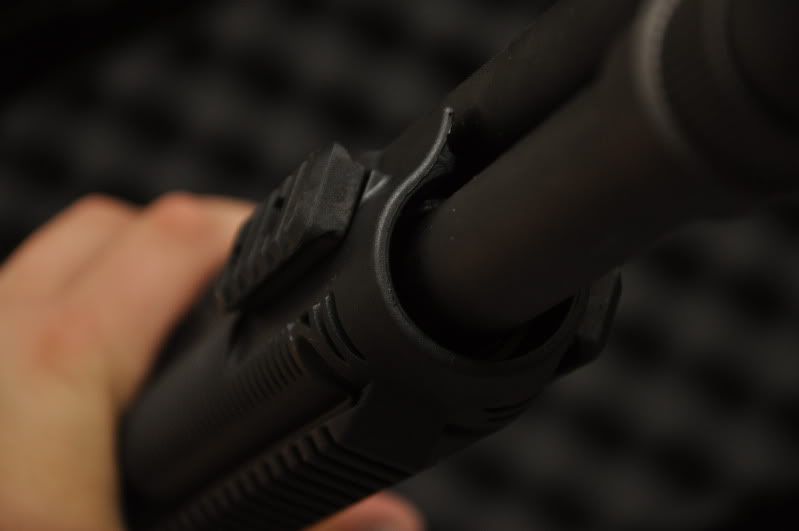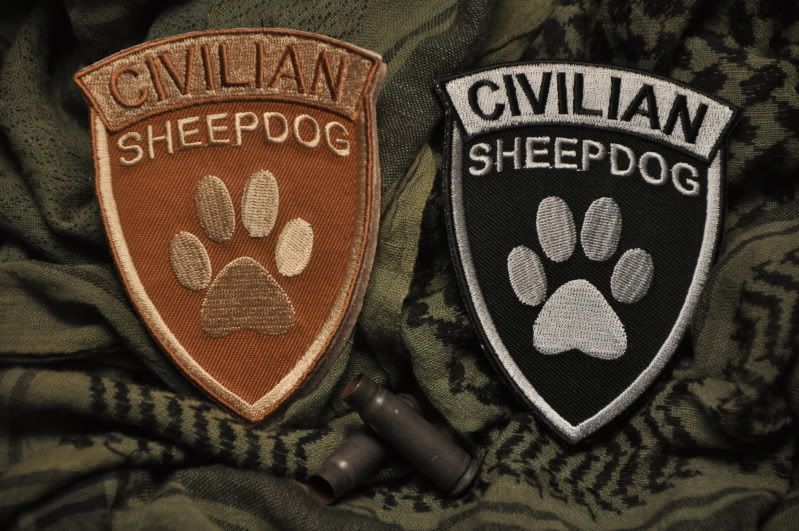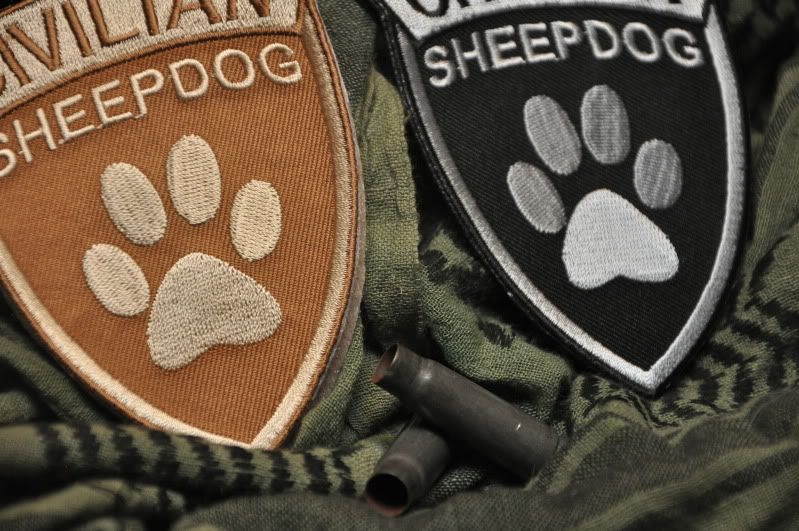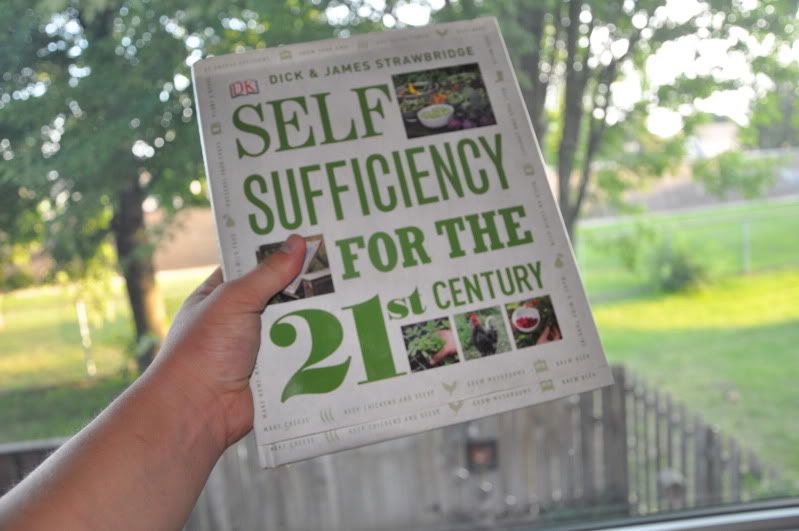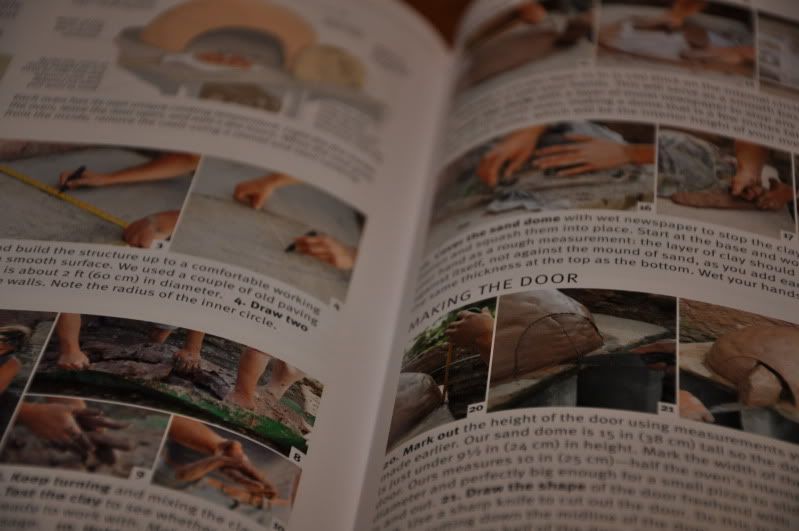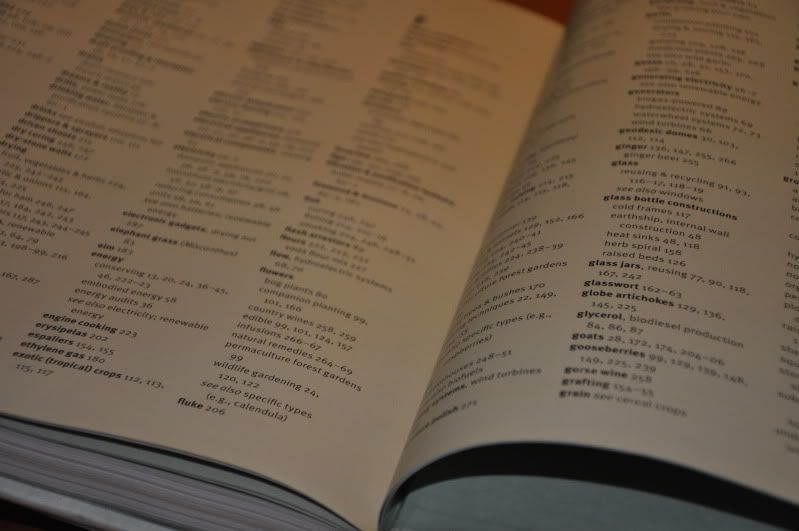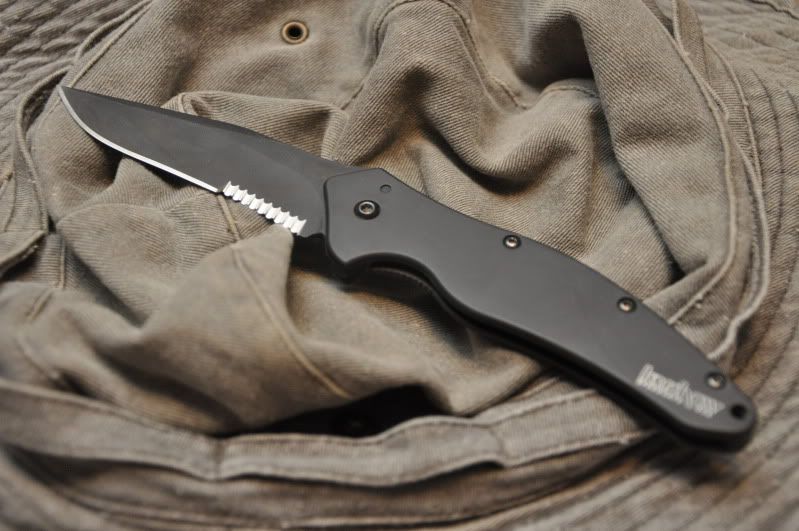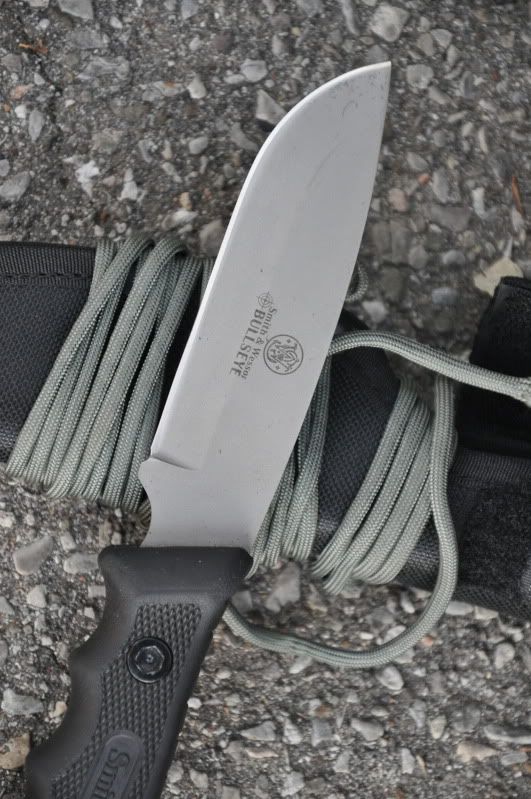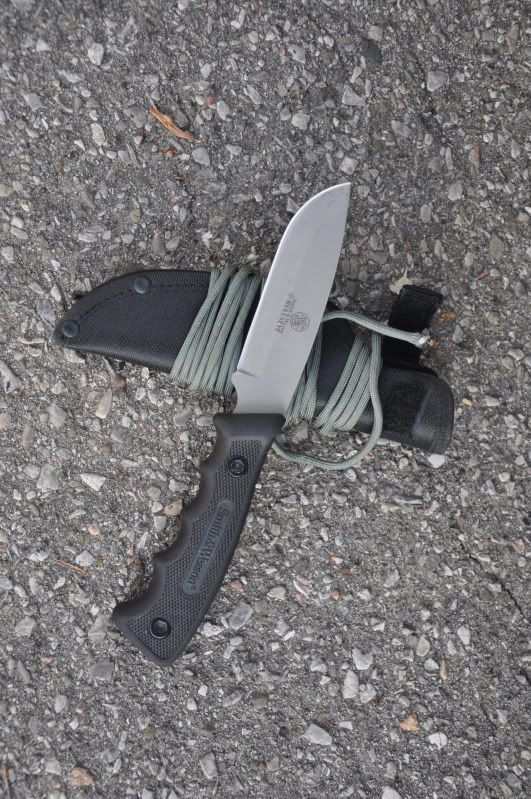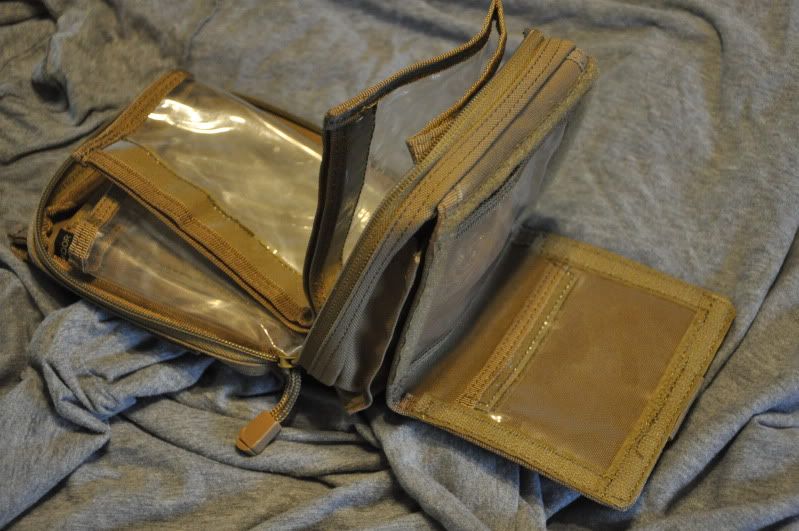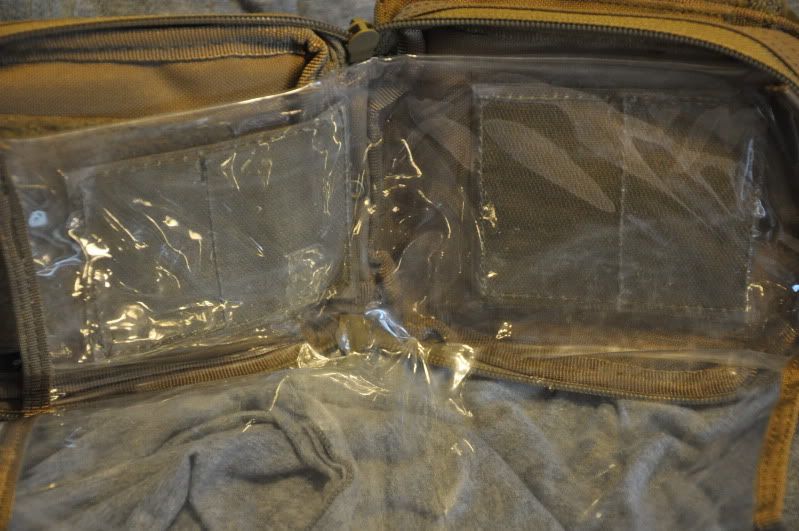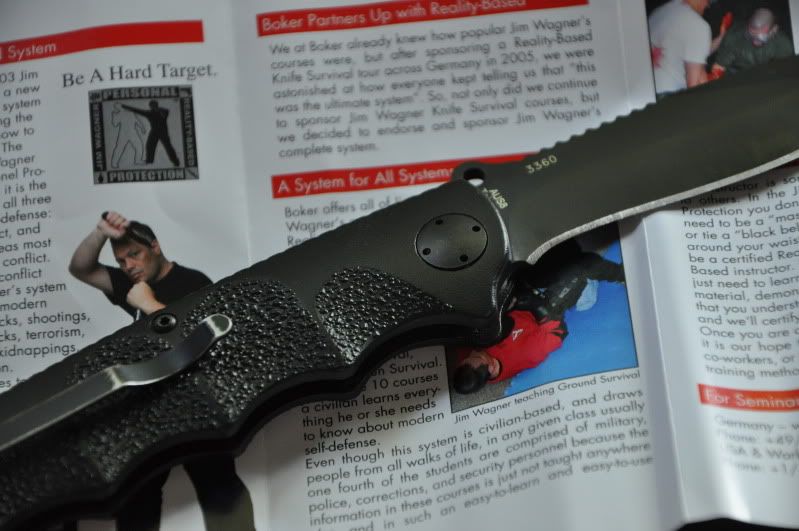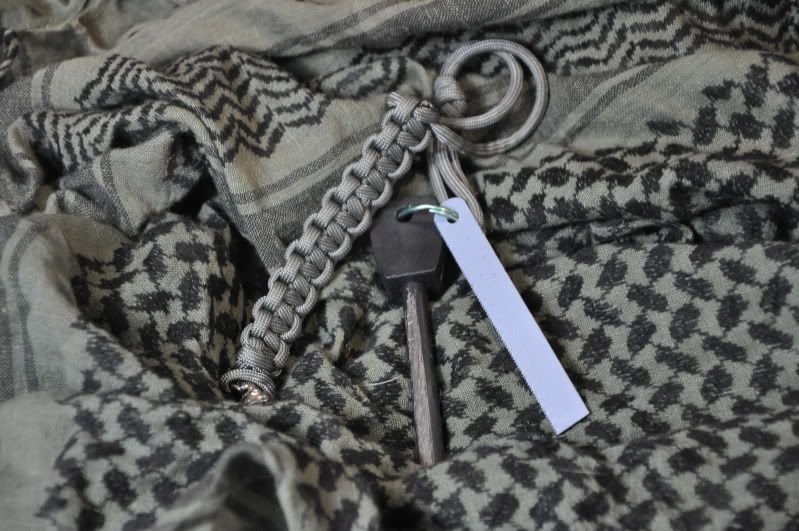A multi-author blog regarding the Canadian preparedness lifestyle. Observe, orient, decide, act.
Wednesday, October 19, 2011
Sector 2011 Debrief
I had the priviledge to attend one such conference, the annual SecTor security conference in Toronto, Ontario, which ran on Tuesday and Wednesday of this week and wrapped up just a few minutes ago. SecTor, short for "Security Toronto", is an annual event that brings together information security professionals from across Canada, with presentations from experts worldwide. As a result of what I experienced at this year's conference, I thought I'd take a couple of minutes to provide a summary of the lessons learned. If there's more interest in any individual subject area, let me know and I'll be happy to post something more detailed on the subject.
Top Things to Watch:
1) Despite glaring security risks, many companies are still finding new and innovative ways to expose your personal information. One of the latest trends involves "near field communications". NFC is insecure, period, but this hasn't stopped banks and other companies from enabling payment systems using contactless NFC technology. Watch for this to be heavily exploited in the near future.
Technology is neat. Don't get ripped off. Understand the risks and educate those who don't.
2) Espionage is Alive and Well. A well known and respected security research firm blew the whistle on a very interesting compromise that seems to have targetted Iran's nuclear program through a very complex attack that could only have been funded by a certain three-letter-agency in a purposely unnamed country. This attack was one of many, and many others have been exposed that are obviously being conducted by foreign governments. What's really interesting is that the attacks didn't target the usual targets...they targetted (and continue to target) employees in downstream material providers for defense contractors, which ultimately provides access to the final assembled components.
Foreign (and domestic) intelligence services will exploit the same social weaknesses as criminals, with a difference; big budgets. Don't for a moment think that anything on your computer, from your computer, or attached to your computer is safe from interception or exposure. Encrypt everything, and keep sensitive contingency plans off the grid.
3) Smartphones are Computers Too. Why don't we think of them as such? Android and Windows phones can be "weaponized" to create hacking platforms which can bypass many of the restrictions on our corporate networks. They can also be hacked, providing access to all the information on your phone. Passwords are good, but like anything, they won't stop a determined attacker. If it's sensitive, encrypt it, or better yet, keep it off your smartphone.
4) Any idiot can pick a lock. In fact, this idiot is surprisingly good at it. When presented with some simple lockpick tools and about 30 seconds of rudimentary instruction, I was able to pick a myriad of locks ranging from single tumbler training locks right up to 7 tumbler master locks. As a result of this, I no longer have any confidence in anything shy of a Medeco.
Bumping a lock can get through just about anything, but it often destroys the lock in the process. Doing it the old fashioned way leaves almost no traces...the implications should be obvious. The tools are available for purchase relatively cheaply, they're legal to own and use (unless you use them to commit a crime), and yes, at least to me, it's every bit as easy as you see on TV.
Of course, I ordered a set. They'll occupy a covetted spot in my bugout bag.
Tuesday, October 18, 2011
STKR Scout - Perfection Simplified
The Scout is a compact drop-point, O-1 tool steel, utility knife with a 23/4” (6.5cm) long, 1/8” (4mm) thick blade and an overall length of 63/4” (17cm). Make no mistake, this blade is compact, but it’s really no larger than it needs to be. This particular Scout arrived with a mirror finish, its full tang wrapped in black paracord, and a matching black kydex sheath with integrated belt loop. The kydex sheath is of particular interest, as it can be altered to be worn either vertical or horizontal and incorporates a magnet to give the sheathing action a more positive lock. These knives are custom built to order, so there are a number of handle and finish options to choose from.
Given its small size, the Scout is best employed as a compact workhorse for detail work and camp chores, such as whittling, carving and general cutting duties, where a larger knife would be too unwieldy or cumbersome. The fairly straight drop point on the Scout lends itself to durability while also making it practical for delicate tasks, like punching holes in leather or removing an annoying splinter. For those looking for an alternative to a compact folding blade for everyday carry, the Scout would serve admirably.
Overall, the impressions on this knife are excellent. The edge arrived razor sharp, and after two weeks of use and abuse it is still hair-popping fresh. While too small for larger camp duties, such as batoning firewood, the Scout really has no equal as a companion blade. It handles confidently, comes with a fantastic kydex sheath, and looks great. The fit and finish is top notch and I’m confident that this little knife would be a welcome addition to any collection.
For those interested, you can contact STKR knives on their Facebook page here: https://www.facebook.com/pages/STKR-Knives/117036668380871
This Scout will be featured in an upcoming giveaway. Keep your eyes peeled!
Have something to add? Questions? Further discussion on this article can be had here.
Tuesday, September 27, 2011
Updates
I've got a bunch of cool content coming up - a review on an axe and two more sponsored reviews - GIVEAWAYS.
Friday, September 16, 2011
Update: Kershaw Shallot
I shouldn't say that I'm surprised - I'm more interested to see if I can bend it back. While I was getting up yesterday, and I'm not sure how but the clip managed to catch some wrinkle in the fabric and it just clipped right out of my pocket. When I picked it up - this is how it looked. I'm not sure how it happened, and I'm not sure what the easiest way to fix it is - beyond buying a new clip.
I'm surprised by this - but I was standing up at 'full speed'. Not that I'm saying there's a bit of weight to throw around at that point but... there's a bit of weight to throw around at that point. I've praised Kershaw for their clip design before - I attribute this to a fluke accident. However unlucky, it's still worth documentation.
Saturday, September 10, 2011
870 101 - Part 2 - Add-ons
In this section, I'll attempt to cover a lot of the available options for the 870 platform. Almost every part on the gun is interchangeable with an after-market piece that adds some sort of additional functionality. Some kit will be better designed for certain tasks while others will have multiple uses. I know that I'll miss quite a bit here - and as this list ages, it will become outdated but as of this writing, I'll try and make this as complete as possible so that when someone is considering the purchase of this system, it will hopefully be all laid out here.
So, let's get into it.
Stocks:
Pistol grip or full stock - there are many options for the gun builder in this category. Some stocks, like the Houge Overmoulded, have a non-slip coating on them to keep it close to the shoulder at all times. The only problem I can see with this is the abrasion you'll catch on normal clothing. Even my Remington Factory stock gets caught on my sleeve sometimes, in dry firing drills.
Some stocks, both full sized and collapsible will have additional shell carriers on them. The Speedfeed stock has built in shell storage - just in case you're all out. This also fits well into most people's 'second kind of cool' criterion.
Stocks are generally divided into two groups, pistol grip and full sized - as mentioned above. ATI produces a lot of budget-series stocks. Some love them, others despise them.
 |
| From the S&J Hardware website. |
You need to figure out what you want from the gun in order to pick the right stock - I kept the factory installed stock because I didn't need anything else. The other thing I liked about the factory full stock is the storage space it allows through the back. There's all kinds of room back there for firestarters, paper work or other must-have items. Probably another thing that should be considered when looking at stocks as an upgrade option.
There are also folding stocks - both side folding and top folding. These make the weapon really tight to move around and also give the benefit of allowing the 870 to function as a pistol grip only (PGO) firearm. For some, that's a major bonus, and a 'cool factor' as well.
Barrels:
If you don't know what the 'choke' on a shotgun is, I'm not going to attempt to teach you - it's something you should have learned in your firearms course. That being said - the choke you elect to deploy in your shotgun has a number of different effects on the way you're able to use it.
Everything from a slug gun to a trap gun will have a different barrel - it's built for a different purpose.
It's for that reason that I went with an open choke, smooth bore barrel. For me, it was the most versitile choice that presented the best bang for my buck - no pun intended.
Some barrels will have sight systems built onto them - others will have a rib that enhanced sights can be clipped onto.
Barrel size is another consideration that plays into barrel choice. Shorter barrels are built for different tasks. Likewise - a longer barrel will be harder to move with but arguably more accurate. Another thing to look out for is vented barrels - a lot of competition shooters will opt for this type of barrel to help reduce recoil.
Sights:
Most 870's you find will come stock with a bead sight. This is the most commonly found sight on the 870 shotgun - though it's far from the only sight available.
Some guns will come stock with ghost ring sights. Ghost rings allow the shooter to reach further, more accurately. They consist of two pieces, a front and rear sight. The rear sight is usually a small circle to focus the front post sight through. Good ghost rings will have some kind of night sighting system built in.
If you don't want full ghost rings / rifle sights, there are replacement beads. I was considering the purchase of a replacement bead but elected not to based on other priority purchases. Most replacement beads will slip right over the factory bead and get JBWelded into place. I'm not sure about the longevity of this solution and have seen online reports of negative experiences with these kinds of add-ons - but that can be said about anything.
Then, there's rails.You can get receiver mounted rails or rails that are built into the stock adapter mentioned before. You can also get rails that are machined as a part of the side saddle unit. On these modular mounting systems, you can attach anything from a magnified hunting scope to the latest holographic combat sight - the choice is yours.
Forends:
Your average shotgun, depending on the model you decide on, will come with one of a few different types of forends. Some might be wood - others synthetic but a definite personal recommendation of mine would be to upgrade yours first, before anything else.
There are forends that have light mounts built in - especially those models from surefire; who's main purpose is to add the functionality of a weaponlight to your system. Other forend's will have multiple rails to allow the user to add their own attachments - light, laser or otherwise.
Some are simple, some are very rail-y but they all provide the same function in the end. They rack the next shell into the chamber.
Small stuff:
Where to begin?
You can get; sling adapters, extended safties, extended mag tubes, mag tube caps, followers, bayonet mounts and detachable shell carriers to name just a few of the common items people will look at for upgrading an 870.
I'd like to touch on a few things in more detail however; side saddles, ammo selection and muzzle breaks.
Side saddles attach directly to the receiver by using the pins that keep the trigger assembly in place. They hold shells for fast reloading and usually come in loads of 4, 6 or 8 shell-spots. Some have open backed designs while others are solid. Some side saddles have integrated rail systems to attach optics to the top of the gun. Some are made of steel - others from plastic. It depends on your philosophy of use concerning this kit.
It's hard to look at shotgun add-on's without considering the type of ammunition that you will use. Slug guns will handle differently than bird guns and different kit can make a difference while deploying your gun. You can get low-recoil loads and less-than-lethal loads as well - adding another layer to the things you should consider when loading up your 870.
Muzzle breaks add both function and form to a shotgun. I once had a particular muzzle flash's job described to me as being strictly for 'knockin' down doors'. Muzzle breaks aid in recoil management and definitely add a scary-looking addition to the business end of the boomstick.
I know that I've likely missed some things here - but I have covered pretty much everything that can be bolted onto an 870 to enhance it's function in the right hands. If I've missed anything major - let me know.
If you haven't read part 1 yet - click here.
If you haven't entered our contest for FREE 870 upgrades, sponsored by S&J Hardware - click here.
Thursday, September 8, 2011
Review: CLC Pro Framer XC gloves
I picked up a few pairs before I saw these ones - and I stayed with them after inspecting them a little closer. Compared to the other models, I liked the stitching on this model. It seemed a little more robust and more conducive to some other tasks I have planned for this piece of gear.
I plan to use these gloves in the bush, hiking, shooting and at work. In this way - I'm really stretching the line for a pair of store bought utility gloves. After picking up a couple pairs of Mechanix at Lowes - I went with this brand, they seem more robust but still remain light and slim. They've got reinforced palms and knuckles with a little bit of soft padding around each knuckle. They're reinforced around the holding edge of the hand - inside the thumb to index finger ridge.
Another feature that can be found on a variety of different work-glove models is the cut off index and middle finger tips and the half cut thumb. This allows for the use of your digits to manipulate small objects comfortably. That'll come in handy for both putting in screws and tactical reloads.
Especially for something that I know will be seeing a lot of action - I don't particularly care about it's 'style'. These are black and grey with some yellow stitching. They're built solid and ring in at about 25 bucks. I'm hoping they'll last through a good season of outdoor use and provide the protection I need at work, on the range and in the wild.
Used these gloves before? Tell us.
Tuesday, September 6, 2011
The chills - late season hiking.
My wife, dog and I were hiding our latest geocache and enjoying some of the cooler weather this weekend when I remembered Les Stroud's iconic saying - you sweat, you die.
Granted - it was a family-friendly hike along the SC Johnson trail - but the lesson was learned on my end. The clouds remained covering the sky for the entire day but we headed out anyways. Along with my normal hiking bag, I packed two extra t-shirts in case we got cold. Even on our short hike, I found it very difficult to control the flow of sweat down the center of my back - eventually creating a wet spot in my shirt and really - giving me a good little chill.
So, I came home and researched some essentials about off-season hiking.
The Great Outdoors - Hiking in Winter
Hiking Dude - Winter Hiking Adventures
Review some of the tips int he links above and share some of your own. I'm always looking for good information.
Thankfully, our hike was in a densely populated area with little risk of exposure. Sure - it's always there, but we weren't very far from civilization at all - we were walking right through it. A good wake up call and a fantastic opportunity to explore some of the science behind off-season hiking.
Monday, September 5, 2011
Review: S&J Hardware 870 modifications - part 1
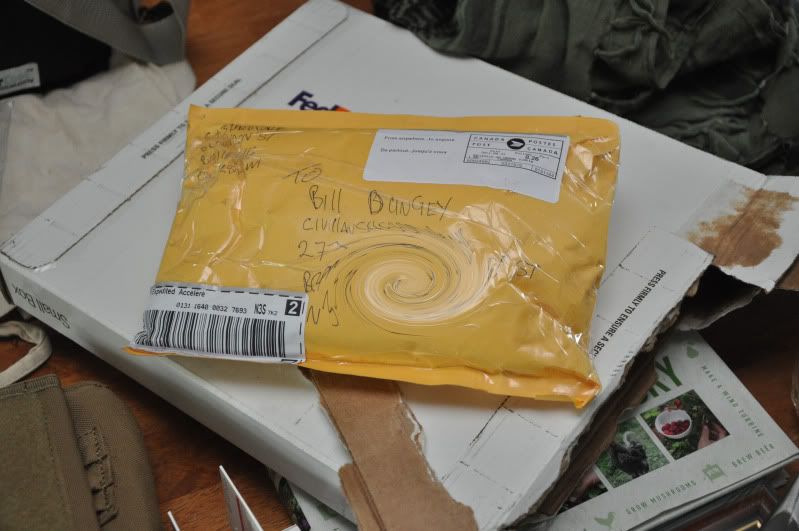 |
| The contents are so cool - they created a blackhole of awesome inside the package. |
 |
| Stock mounted DSC from S&J Hardware. |
Further from that, a user could keep a few different velcro shell caddies hooked onto the inside door of their gun safe with shells ready to go. The same could apply for the trunk of a car or another safe area to keep ammunition. Another thing to consider for the use of these is the colour you get. For instance, you could keep certain loads in certain coloured DSC's and know, just by looking, what load you're about to stick on - just by the colour. Rip and ready to rock.
The other thing I'd like to mention is the quality of the material itself. This is made to fit six shells, held in place with elastic. It's good enough to keep them in there, but I don't know how it would hold up to having shells in there upside down - time will tell. The caddie itself is constructed with a stiff back. Compared to some knock-offs and the commonly seen velcro backed shell holder, the S&J version is good and solid. It doesn't bend and warp.
 |
| S&J on top, no-name on the bottom. |
Simon has already confirmed that new production models will have a pull tab to quickly remove the empty DSC from the surface it's attached to. That way - you can rip off the empty and transfer a new one from your vest to the gun.
The DSC costs 13 bucks on the S&J site. Go get it. Even not to keep explicitly on your gun - I'm sure you'll find somewhere convenient to keep it.
The next item I installed was the enhanced jumbo safety. Admittedly, the 870is a little more difficult to take apart for a newbie, if compared to a dead-simple firearm like the SKS. That said, it all looks pretty easy if you compare it to an AR or otherwise. It falls apart into a few big 'sections' - I used this video to guide me through the whole process.
Once I got the trigger assembly out - it was quite simple to pop the old safety in and pop the new one in. If I get a gun all apart in front of me, I like to take the time to perform a piece for piece clean-out and lube. Especially for guns that don't shoot corrosive ammunition regularly - it can become a back-burner kind of thing to do the full field strip.
If you compare that to your stock 870 button safety, it's easy to see the difference. This this is huge!
When I got everything put back together, I shouldered the shotgun. Immediately, I noticed the safety jutting out from where it used to sit tucked into the little spot it rests in. It's got a good grip too, I don't know what the exterior is made of, but it creates a good amount of friction on the inside of my index finger.
One thing that I noticed when I was playing around with the action of the safety itself was a new way to actually shoulder the gun altogether. I don't know how practical it would be, but at the crux of a quick shot scenario, a shooter could off-safety and shoulder in the same instant and the index finger would slide right into the trigger. It could all be one fluid motion with this attachment; one that needs practised but is absolutely well worth the 15 bucks it costs.
If I would change one thing - it would be to add a red ring on the other side of the safety. That's only because of the way I learned about firearms' mechanical safety features. "Red means dead." I intend to paint my own little red ring in the channel.
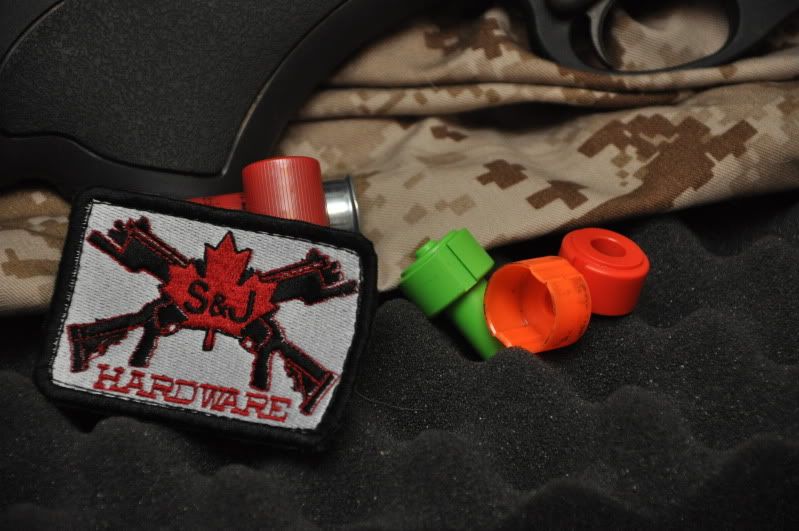 |
| S&J 870 followers. Type one, Remington stock and type two. |
The followers are made of a high visibility material that is hard to the touch. It's marketed as being made from 'delrin' material that is slick and smooth. It's a 'no-jam' follower. I won't have had enough experience with this product until I've put through a couple hundred rounds to know that it is in fact 'no-jam' but it does feel heftier than the stock one. It's sold for a couple bucks and you really can't go wrong.
It's good practise to rip your shotgun down to parts - and a good product to put in place of the stock version. As a matter of fact, the follower S&J makes was the first product I found from them on CGN's forum. It was only after browsing their site that I found some of the other stuff they offer.
The other thing that should be noted about the follower is the actual 'visibility' it offers. If your 870 comes with a black follower of any type - immediately replace it with one of S&J's offerings. If you train to look for the green follower and teach you brain; 'green means empty' - it'll be easier in the long run to know when you have to reload. Especially for the competition shooter - if you lose track of your shell count, this is a bright green sign screaming; RELOAD!
Review: Fab Defence PR870
The Fab Defence PR870 is a forend for the 870 platform. It's got two short rails on each side and a long rail underneath. These points allow for the attachment of your standard targeting apparatus - lights, lasers and infrared lighting accessories. The bottom rail is suited for these as well as foregrips - if you're running a pistol grip, and perhaps even if you're not.
When I had the pistol grip on my gun, I used a Tango Down QD Foregip - this made the gun much easier to point in my case. It might be a personal preference, but I loved the way that it locked into my shoulder when my front hand was cycling the forend. It made for sharp movement and an easier reloading step when doing it in a hurry. Usually, you'd slide your hand over the forend when done rocking the shell into the chamber, to ready the gun for firing. When there is a foregrip attached to the PR870, you don't really need to focus as much on that movement because your hand will inevitably rack up against the vertical grip jutting out from the forend itself.
The bottom rail is moulded directly to the forend itself while the side rails have screws to allow for their removal. Since I've had it, a number of mounts have been popped on and off the side rails; there has been no sign of wear or any kind of loosening to be seen.
It slides well and has a ribbed texture to keep a good grip. I've tested the grip wearing gloves and bare hand, it provides a sturdy grip and smooth handling in both situations.
The grip serves it's purpose - it allows for accessories to be attached and provides a stable grip. It's a good upgrade and I would suggest you take a good look at it. It's not covered in rails, it's economical and it has practical uses.
If you're interested in 870 accessories, check out the article we're doing on the 870 platform, or this FREE GIVEAWAY for some S&J Hardware parts - heck, while you're at it, go sign in on our FORUM!
Thursday, September 1, 2011
Shop CSD
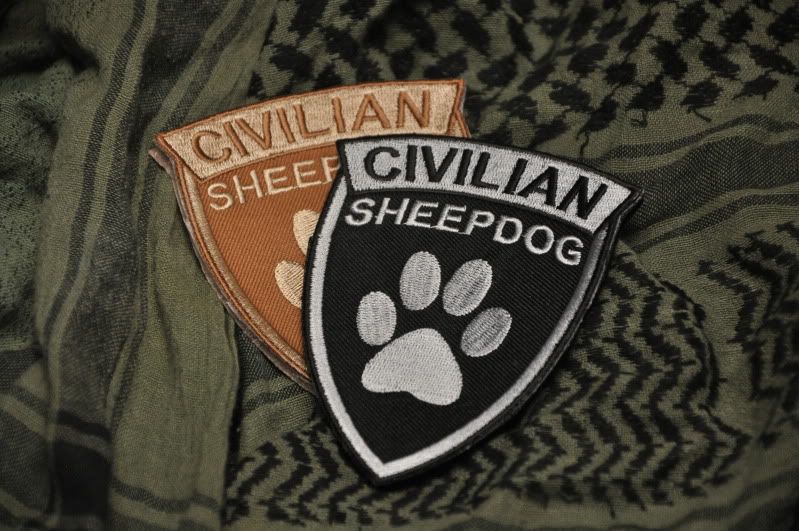 |
| OFFICIAL CSD PATCHES NOW IN STOCK |
SPECIAL: 17 bucks for one of each colour. (plus shipping for worldwide orders)
Send EMT/PayPal and FULL mailing address to the link below.
Well - we've stepped into that next level as an online community. Now, you can represent your beliefs in the Civilian Sheepdog mindset by slapping a patch on your shoulder when you go to the range - or on your bag when you go to school.
We've got patched professionally done in two colours displaying the CSD shield. It's branding without the brand!
There's no 'dot com' address to be seen on these patches, so they qualify more as a morale patch than they do a representation of our community. You'll know the difference though - that in purchasing your patch directly from CSD, you're not only providing support to expand the reach and depth of the movement, but you're also getting one straight from the source - www.civiliansheepdog.com.
CSD has always been, above all - a one man initiative by myself. I've provided all the funding to get this site off the ground and to continue the growth we've seen so far - a little help couldn't hurt. Some forums just ask outright for money - and you might get a little tag or a label to broadcast your support. With CSD, you'll get a patch to physically wear - and if anything else, I promise it'll be a conversation starter.
Included in every patch order is a bunch of QR code stickers so you can point others towards the site.
Thanks for the support - FIGHT THE WOLVES.
=====
Dollar Store Stove.
Read our review HERE.
Send EMT/PayPal and FULL mailing address to the link below.
Wednesday, August 31, 2011
FREE GIVEAWAY! S&J Hardware - shotgun accessories.
Our Forum - Ad free, free to join!
www.forum.civiliansheepdog.com
Join today!
Tuesday, August 30, 2011
Review: Self Sufficiency for the 21st Century
Monday, August 29, 2011
870 101 - Part 1 - Introduction
I'd like to start by saying that I am far from an 'expert' when it comes to any gun - I'm not a gunsmith or a warfighter - I have however gotten used to my firearm as a tool and have enough experience to feel like I can add to the chapters of information already found online regarding this gun as a weapon platform, in a systems approach. I'm sure a lot of cyberspace shell jockeys will queue up the flamethrowers as soon as they read that I'm not an 'expert' but I'm comfortable with what I can bring to the topic, and I guess that's all that really matters.
 |
| 1300_stainless from CGN let us use this picture as a shining example of a steel and wood 870. |
I've heard of them breaking - sure. But I think that's what initially swung me over the fence to buy one. If anything happens to mine, there are so many of these things floating around that finding a suitable replacement part, from stock to bead sight - will be almost a non-issue. I'll find one somewhere.
 |
| CGN user 'zykopat' kindly let us use this picture of his 870 to display some 'tactical' options. |
There are a number of 870 models; Marine, Wingmaster, Express, Super Magnum, XCS and Police - if I'm missing one, let me know. Each model has different features out of the box and are designed to accommodate the needs of different shooters. I personally bought the Express - it was the cheapest entry level shotgun I could afford, and it offered some features I was looking for already so that I didn't have those items to upgrade.
The other thing that I like about the express series is that it kind of allows you to build the shotgun that you want, from the ground up. It's just bone stock and you can add what you want to it. I had never built a gun from factory stock model before. There's lots you can add onto an 870 and we'll explore options that we have as consumers and what I decided to do in a later post.
Just as there are for the AK platform and different AR15 disciplines, there are entire armourers courses designed for the 870. That tells me a few things; there are a number of companies dedicated to the education of gunsmiths on this particular model - there's a lot of them out there and that means there are more deals to be had on used models. Typically a used 870 can be bought from three to four hundred bucks, in Canada. That's pretty good in my opinion.
The 870 makes a great 'first gun' as well. It's relatively easy to disassemble and 'learn'. It's multi-use in the field - you've got birdshot, buck and slugs. Just in those ammunition options alone, the end user is granted the flexibility of a crude rifle, a historically proven hunter and a formidable defensive weapon.
 |
| My 870 - prior to some modifications that have taken place recently. |
Through this article series, we'll explore the different accessories that can be attached to an 870 as we look at the gun as a platform - then we'll take it into the field.
Stay tuned. In the mean time - sound off in our FORUM.
PART 2 - Add-on's.
=====
Resources:
870 Wiki Article
Official Remington 870 homepage
Price point for 870 express
Saturday, August 27, 2011
Civilian Sheepdog - Philosophies - Tools
Got a comment? Visit our FORUM!
Thursday, August 25, 2011
Review: Kershaw Shallot
If any of you followed the thread on the forum about my recent spending, this new flash is the outcome of that conundrum. It's more of a generic flash for my camera but certainly an upgrade from what I was using for lighting, and I won't even post that picture. It even gives DIY a bad name...
So - I got a new knife.The Kershaw 'Shallot'.
As a gift, I received this knife a few days ago. I havn't really put it through any real cut tests but I have substituted it into place as my current EDC blade. It's done some minor cutting jobs fluidly, just as a new blade should. The real test will come with it's first introduction to drywall - a last resort to shove any blade into that material but a true test to stay on me as an EDC carry option.
It's thinner than my last Kershaw EDC knife, the Clash. The other thing that I like is the way the frame locking system has been incorporated into this knife. The lock is a part of the handle itself - that really cuts down on weight and size. There's no handle outside of the lock itself.
The blade is sleek and sharp out of the box. I got the choice between a serrated edge or not - I went with the serrated one. Why? I kind of look at it as another tool on the tool itself - for the heavier cutting tasks.
The hardware on this knife kind of reminds me of the Leek, with the three body screws and one pivot screw, it's a design found on quite a few Kershaw models. This one has the same pocket clip that I've accredited Kershaw for including before - screwed to the body, not inside it. It sits nicely in my pocket and draws quickly.
The blade deploys quickly by the use of Kershaw's SpeedSafe system. It snaps into place and stays there - rigid and ready to cut. Made with Sandvik 13C26 steel - I'm sure this blade will stand up to most anything I can put it into.
I'm pleased with the overall feel of this knife - it's light and fast, a nice change from my more clunky previous EDC folder. It is a little 'intimidating' however, and you'll need to fit this knife into your own POU as you see fit. A good folder at a reasonable price - free for me!
Have something to say about this knife? Sound off in our FORUM.
Thanks Dad!
Monday, August 22, 2011
Prepping as a hobby
What an awesome thing to explore!
In many ways, the things we do as 'preppers' often cross-over to our everyday lives. The most simple example of this is the inclusion of your EDC gear into your standard 'getting ready' procedure in the morning. For most people, their every day gear consists of little more than a wallet, a watch and maybe a USB key. However, some people have a finely tuned system that hopefully enables them to solve real-life problems on the fly. More people than you might imagine have an EDC system - they just don't call it that. We all carry tools to help us, some more than others.
Just in our EDC, most guys take countless hours researching each tool as it applies to their overall system. In doing so, they learn all sort of things about flashlights, knives, load bearing kit, shoes, clothes, technology and more. In my humble opinion - this learned information trumps celebrity trivia outright. Not to say that one man's hobby is any more important than the next, but I do believe in a type of gradient when it comes to knowledge. Some information is just more important than the rest.
Reading reviews, conducting field trials and developing cheaper and better ways to do things is another huge aspect of the hobby-based prepper mindset. For some, it's really fun to get new gear and bring it into the middle of the bush. This is one aspect of preparedness that really interests me. I like to actually get out and use the gear I've purchased. That said, I'm not huge on stockpiling multiples of my gear... which can be another aspect of hobby-prepping. Some guys like to have a clean closet with, again, a system for stacking cans and gear.
There are multiple ways that people start living a more prepared and self sufficient lifestyle - and that's what it is, a lifestyle. I've found that for most, it's through treating preparedness as a hobby. Sure, there's the lunatic fringe that begin getting into it as a means of fuelling their own irrational psychoses, but more often than not I've found that people are usually just more interested in creating a safe environment for their loved ones during a crisis. That's an important way to look at it as well - it put's it back in your lap. You're creating the life you want to live, regardless of the external influences shaping the world around you.
So hobby-on preppers... and don't forget to drop by our FORUM.
Sunday, August 21, 2011
Review: CRKT Zilla-Tool
Today I've got kind of a unique product to take a look at. My brother bought this multi-tool to add to his tackle box as a sort of fix-all when he runs into a problem on the riverside. I didn't know CRKT offered any products like this but it's a wonder they don't have more - I like this little tool and I think you will too.
It's got a flip out blade with a paddle (flipper) on the back end. Half way down are some serrations and it's still sharp to the touch after many trips into the bush. With a black zytel handle, you needn't worry about any weathering to this tool. Specs from CRKT can be found here.
What I think separates this tool from the other models out there is the sheer simplicity. Sure - it's not a mobile toolbox, but if you're buying a tool to fit one specific purpose, this is a real contender. A knife, a flat head, a phillips and a good set of pliers - what more do you need in a tackle box?
A feature that grabs me about the pliers is the way they open. They're not spring loaded, but when you slide the handle lock down to open the pliers, they gradually open with a slight amount of pressure - a good thing to have for pressure sensitive holding jobs.
It's got a pocket clip that is screwed right into the body - a feature that I usually praise Kershaw knives for practically perfecting. It's still strong and springy but truth be told - it hasn't seen much pocket carry, and is pretty big to be clipping on. It takes up a lot of real estate in almost any pocket.
The tool as a whole fits in my hand nicely and feels slick - it's a very streamlined design. My brother is very happy with his purchase and shows off this nifty gadget whenever he can - usually by unhooking my lost bet.
Feel free to share your thoughts HERE - in our forum.
Wednesday, August 17, 2011
Review: S&W Bullseye
I picked up the S&W Bullseye at a local army surplus store, brand new for about 25 bucks as I remember it. I just wanted a fixed blade knife to supplement my vehicle EDC bag. I picked this one out for one reason - I recognized the brand. At the time, I had limited experience with blades and didn't know what to look for. It's a decent blade, but it's far from perfect.
I guess for this blade, it's all about POU. Made with 440C steel, it's strong enough for most tasks. I'm not sure how it would perform in the long-term given it's one major flaw - it's not full tang. The steels narrows to a rounded point around the second screw and does not maintain the shape of the blade itself. I'm not sure how comfortable this would be after multiple cutting tasks as the grip can move around a little bit if you really squeeze it.
It came with a nylon sheath that feels quite durable. I doubt any work that I put this knife through will damage the sheath in any way - aside from the usual fray and wear it would see as a result of being thrown around a little. The knife sits in there snug and closes with a velcro strap. I wound some 550 cord around it to make good use of the space I have in my vehicle bag.
Check out our discussion on this blade in the FORUM.
The handle just feels like rubber. It's got a good grip and my fingers fit correctly into the grooves cut out on the handle itself. It's comfortable to hold but a little tiny bit unbalanced towards the blade end - I think that's more to do with the strange tang design than anything else.
A good knife at a good price - I guess, depending on where you get it. If you're just looking for an economy blade there are better choices out there, but this will do most cutting jobs in a pinch.
Monday, August 15, 2011
Sunday, August 14, 2011
Review: Condor map pouch
There is a good sized Velcro panel on the front for attaching nametapes or morale patches. All the seams along the outside of the pouch seem strong enough for mild usage. Again, it's awkward for me to describe the real-world durability of gear used in a combat situation - I've never been there. I can only describe it from my standpoint - some throwing around and mild range usage.
This pouch folds open twice. The front folds open with some spots to contain paperwork, cards or other small items behind the plastic. I'm not sure how well this would hold up to sharper or wider things being stored there - I think it's primary POU is for the storage of paperwork. I use this space to keep all of my registration papers for the firearms I have with me, copies of my license and test papers and anything else I think would be useful to a range officer in asking anything about my activities.
The front panel can also be pulled up to show a few spots to hold writing utensils. There's another spot for some paper or small item storage too.
In the back end of the pouch, it folds out to hold a larger map, folded paper, documents or otherwise. It's all held in place by some Velcro panelling on the inside of the large back pouch. In this way, the plastic folding container can be completely removed if the user wishes. I haven't had the need to test the waterproof capabilities of this unit - I havn't even had it in the rain. I'm confident that it would keep the contents reasonably dry, based on my handling of it.
When you sit back and take a look at a piece of kit like this, you have to keep in mind a few different things. It's twenty bucks - brand new, off the shelf. So therefore, you're going to be getting a piece of gear that is in all likelyhood not made to the same standards as higher-priced gear. In saying that, if you're looking for a light-use kit that conforms to your own personal POU and maybe fits into that 'second-kind-of-cool'... then why not?
Join the discussion on this pouch in our FORUM.
Saturday, August 13, 2011
(soft) Launch of CSD forums - 2.0!
I've started up a forum based on some advice by ASC user Wilson and some feedback I've received from a few different CSD readers. I'm in the process of making a few changes and deciding on even more. In the future I can see a rework to the way CSD is provided to you, the reader. Until then, I've gone with some free alternatives - until I see if there is enough interest generated to warrant dropping the cash on upgrades.
You'll find a link to a forum post for every review we do from here on out - I might go back to each review and create posts if I can find the time. So now you've got a few different ways to interact with each author and each article - youtube, facebook, as a comment on the post and now - a forum.
We'll call this a soft release (that's what she said) - I want to see what kind of interest the forum generates and we'll go from there. Feel free to drop in the live-chat session too.
Keep in mind that the forum is very beta as well - if you can see room for improvement, POST.
Thanks to all for reading and getting our community this far already.
Here goes nothin' - check out the thread on our forum for this post, HERE.
Friday, August 12, 2011
Preparedness ≠ Paranoia
There has to be a line somewhere, however. We, in prepping for what may - or more importantly, what MAY NOT - must remember to keep full and rich lives ahead of our planning. It is important to be prepared, yes - but at the end of the day you can only do what you can do.
This does not mean taking a half-assed approach to everything. It means smelling the roses, enjoying sunny days and taking care of ourselves. Some things are bound to happen. Power outages, short and long are historically PROVEN to happen in times of over-consumed power in the summer and from stormy weather in the winter. This isn't to say that power outages are confined only to these times, only that they are historically more prevalent during these times. We should use this knowledge to prepare for events on certain proven timelines.
Events that transpire as one-off things require a different mindset. Terrorist attacks, widespread rioting and localized crime are prime examples of this. All of these things have occurred in Canada very recently, with the exclusion of terrorism. Though the threat has been present, nobody - thankfully - has succeeded in an attack. These events require a sort of long-term plan that only real 'preparedness' can affect. Though it is unlikely, it is not IMPOSSIBLE for these events to occur. That is why we prepare.
Got something to say about it? Speak up in our FORUM.
Review: Boker reality series folder
I got the knife and on getting it out of the packaging I noticed a few things right off the top; this knife will serve me more as a specialty piece and - wow, these guys are really focused on the 'fighting' element of this blade series. The packaging included had some flyers regarding the 'fighting' system this blade was based on. That's good and fine as eye candy but I need'nt remind our readers of the legalities surrounding this mindset. Be very careful of where you wear / use a knife like this. This knife looks like a weapon - make no two ways about it - it's got a window popper on the tail end and finger grooves on the handle. It'd make a good companion knife on the range, but not in the office.
I had the opportunity to really test this blade lately. I was up at my cottage and put it to work trimming up some wood to get a fire started. On a few passes, the locking mechanism broke completely. Not only does the knife not stay open now, it can be unlocked with the pressure of my thumb on the back end of the blade. Admittedly, I put the knife through more work than it was cut out for - but you should keep that in mind when purchasing this knife. It's made well, but this is not a knife I would stake my life on.
It's a cool looking knife - and it fits my hand well. The specs can be found online - but I havn't found a credible source.
For the price - anywhere from 50 to 80 bucks online; keep looking. This knife is NOT worth the money. Especially given that most retailers in Canada will not sell this as an assisted opener, you really have to dig your thumb into that button to release the lock. I wouldn't have bought this knife, had I known - but it makes another addition to my knife drawer.
Feel free to discuss this review at length, in the this article's dedicated thread in our FORUM.
Wednesday, August 10, 2011
Use Of Force
No doubt about it - there was a true WROL situation happening across the pond this week. I offer all of the cyber-support I can to the families and friends over there who were victimized by these thugs. It's a stark awakening for some - but a reminder for others. It's a deep look into our natural, animal instincts. It's a mirror to failed policy and generations of mistrust.
There are no excuses. There are no true explanations. It's just people being people - we're all capable of it, some just have better coping skills.
Europe, America, Canada - there are examples that can be made in almost every major populated area in the world. I am no sociology professor, but I can see things happening on the news that I've never seen before. I don't know what's causing it, but I know that there are massive groups of people who seem to get a good kick out of destroying things. Lives, property, morale - if you look closely, a lot of the 'protesters' in England this week were smiling and laughing with each other - not being angry and screaming for change.
These examples are good reason to discuss a topic often left out of Canadian conversations, especially regarding the use of force. While some people subscribe to the notion of 'god given rights', I prefer to remove the religion from that statement and just call it 'natural rights'. I guess you have to be slightly humanistic to accept the notion that we all have inherent, inalienable rights that apply under all circumstances but in any case, this is a philosophy that I subscribe to and I'll discuss the use of force assuming that natural rights do apply.
Specifically, the natural right I'm referring to is a simple fact in my eyes; you have the right to protect yourself. In saying this, please understand that I am not identifying your property as a part of you - that's a separate issue that I'm not prepared to discuss in this article.
Understand, as well - I am not a police instructor nor a non-violent-crisis-intervention teacher. I'm just speaking about common sense here. A rational reaction method to an unreasonable situation. I think that's a fair conversation to have - after all, we're adults; responsible and rational.
So let's toss around a situation - there's a localized loss of the rule of law in your area - under a few kilometres from your house. You've secured your doors and main floor windows and your family is all accounted for and safe. What's next? I'll take for granted the fact that you've thought about this in advance.
If you're being confronted by an aggressive individual, there are a number of things to take into account when you're in the middle of a situation like this. Is he alone? What's his disposition? Does it look like he's carrying a weapon?
Remember O O D A.
Here's a little list to get us going. Use this as rough guide to your actions. Of course, everyone's arrangement will be different and dynamic but this could serve as a good starting point for an open dialogue concerning the use of force in a truly defensive situation. This list is used (apparently) by police officers - you'll have to draw up your own list. That in itself is a fantastic way to explore how self aware you are; know what you're capable of.
1. Physical Presence
2. Soft Hands
3. Mace or Pepper Spray
4. Hard Hands
5. Police Baton, Taser, etc.
6. Threat of Deadly Force
7. Deadly Force
Under no circumstances am I trying to portray a violent confrontation as a 'cool' or 'fun' thing to be involved in. I hope you can ascertain that from the tone of this article. You should only progress through these stages begrudgingly. Only after you've exhausted every possible alternative could you even consider the use of force on someone else. Alas, there will be times in an actual WROL situation that we will be forced to stand against someone trying to do harm to us. It's just a simple fact - there are people out there who will make the conscious decision to attack us at the most opportune time. It's unfortunate, but it's the reality of the world we live in. But I guess that's a fight or flight thing, isn't it?
These stages represent your reactions to a violent situation as it progresses. The time needed to advance to each new stage will depend entirely on you - and I'm not sure if it's something a civilian can train for, but it's certainly something you should be aware of.
It's a touchy subject - one worth talking about in our FORUM.
Sunday, August 7, 2011
Review: North 49 Firesteel
I attached a keyring to the hole in the top of the firesteel to keep a length of an old sawblade attached. True - it's not the best striker, but if I don't have a knife on me it will work wonders I'm sure.
I took my hiking bag on an outing today and found this item right where it should be as I opened the bag. I had almost forgotten that this item was with me, but I suppose that is a part of it's own philosophy of use. It's truly an emergency item. It's there when I'll need it most - I put it right back after the picture was taken.
On the trail, I gathered a handful of dried out plant matter. I set it all on a rock along the shore of the river and placed my firesteel at about a 45 degree angle from the surface of the rock. I scraped the shaft of the firesteel with my knife - a SOG seal pup - and that was all it took. I wasn't surprised to witness the utility of this tool, but it was still cool to see it work so simply.
I'd recommend this type of tool to all outdoor enthusiasts. It displaces the need for a lighter - but it's easier to just use a butane torch by far. This acts very well as an emergency fire starter and should be included in any hiking bag. I'm not sure of the variances between different manufacturers but I doubt very much that you'd go wrong with any commercially available model.
We've got a discussion going on our FORUM regarding this article - c'mon in!



